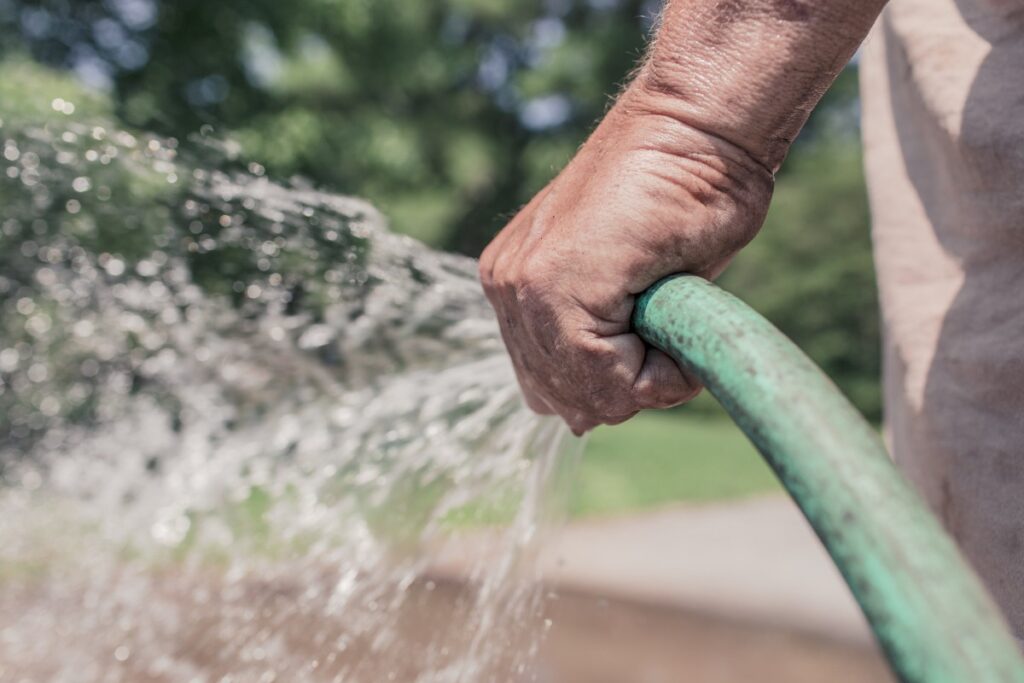Saving water in the garden

In hot and dry weather, water used outdoors can amount to 50 per cent of the total used. You can have a beautiful garden using less water. Find out about what you can do to make the most of rainwater and reduce the amount of mains water you use.
Everyday watering tips
When you are watering your plants there are many things you can do to make better use of water in your garden, for example:
- use a watering can instead of a hose
- if you do use a hose, use a trigger to control the flow
- avoid using a watering can on roses, except on young seedlings, as much of the water does not reach the roots where it’s needed
- water early in the morning or late at night so that water doesn’t evaporate in the heat of the day before it can reach the roots
- add water retaining crystals to the soil to keep in moisture
- leave plants and shrubs dry until they show signs of wilting – watering too often can keep roots shallow and weaken plants
- weeding regularly makes sure that watering helps plants and not weeds
- prioritise young plants and seedlings; more established plants will survive longer periods without water
- don’t waste water on paths and patios
Saving water while keeping your lawn healthy
Lawns are usually the thirstiest part of a garden. A sprinkler can use as much water in an hour as a family of four uses in a day. There are easy steps you can take to reduce the amount of water your lawn needs, for example:
- letting the grass grow longer in dry spells helps keep moisture in the soil
- infrequent soaks will be more effective than frequent sprinkling as they will encourage roots to search for water deeper in the ground
- even if your lawn goes brown in the dry weather, it doesn’t mean it has died – it will usually recover when the rain returns
- if you’re looking to re-do your lawn or re-seed part of it, choose grass varieties that are better suited to dry conditions like fescue grass or smooth-stalked meadow grass
Install a water butt
Thousands of litres of rain water fall on the average roof every year. Collecting this water and using it on your garden is better for your lawn and plants, as well as the environment. You can also use the water to wash cars and windows.
Fitting a lid to the water butt will stop leaves collecting or small animals falling in and drowning. If you want to collect more water than can be stored in one butt, it is possible to get a connector kit to link up two or more.
Make use of greywater in the garden
Any water that has been used in the home, except water from toilets, is called ‘greywater’. Shower, sink and laundry water can be re-used in the garden during droughts. Greywater from baths and showers can be used to water non-edible plants – make sure it is cool before you use it and don’t pour it straight onto foliage.
Plan a water-efficient garden
Things to consider:
- healthy composted soil will retain moisture and nutrients
- choosing drought-tolerant plants means your garden needs less water
- planting new shrubs and trees through plastic helps to retain moisture and control weeds
- loose mulches (such as wood bark or coarse home compost) around established plants stop water evaporating
- your lawn only really needs watering once a week and it is better to water in the morning when the temperature is lower and evaporation is less
- place a planter under hanging baskets to catch the drips
- add water retaining crystals to pots and containers
Washing cars
A hose uses around 135 litres of water for every 15 minutes of use. Instead of using a hose to wash your car, use a bucket and sponge.
The wider issue
Increasing demand for water means it is important to find ways of conserving this valuable resource. Saving water in the garden can help cut the risk of drought orders and water restrictions, and help protect wildlife.
Source: nidirect.gov.uk
